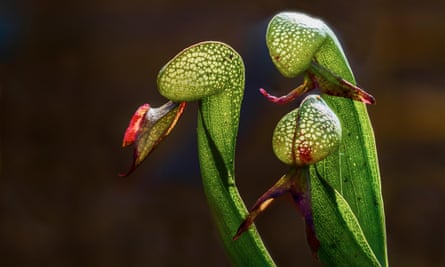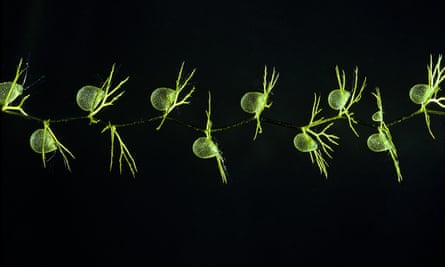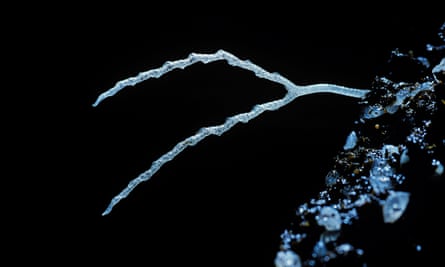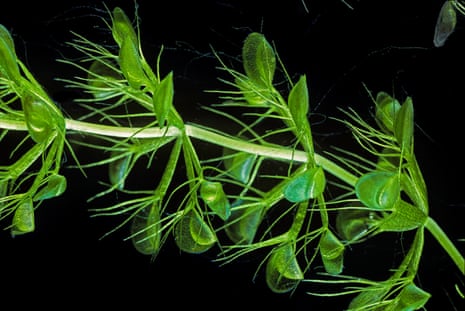Waterwheel plant
Scientists at the University of Freiburg in Germany have for the first time characterised the snapping movement of this rare aquatic carnivorous plant, found in wetlands around the world. Aldrovanda vesiculosa snaps its “trap” shut 10 times faster than the much larger Venus flytrap, using a combination of hydraulics and the release of pre-stress to capture water fleas and possibly even tadpoles and small fish.

Cobra lily
An example of a pitfall trap, or pitcher plant, this distinctive species, native to the western US and given its name because it resembles a striking cobra, traps insects in its tubular leaves, which can grow to nearly a metre in height. The prey is distracted by false exits – the real one is concealed – until it tires and falls into fluid at the bottom of the pitcher, where it is digested with the help of bacteria.

Sundew
In the manner of flypaper, these diverse carnivorous plants, with nearly 200 species distributed across every continent except Antarctica, use sweet, sticky mucilage to lure and capture their prey. Rather than provide energy, the insects are used to supplement nutrients lacking in poor soil conditions. Trapped prey are engulfed in a web of the sticky glands and digested by enzymes.

Bladderwort
Mosquito larvae, aquatic worms and tadpoles are among the victims of this genus, containing some 220 species of plants found in lakes, streams and waterlogged soils around the world. When prey brushes against trigger hairs, a trapdoor is activated and the prey is sucked into a hollow bladder, whereupon the door closes again – all within a few thousandths of a second.

Corkscrew plant
Easy to enter but difficult to escape, due to spiralling arms with inward-pointing hairs, these plants of the genus Genlisea, found in Africa and South and Central America, are examples of so-called lobster-pot traps. The traps are underground and they draw the prey – usually minute microfauna – upwards into the body of the plant. Carnivory in corkscrew plants wasn’t proven until 1998.

Comments (…)
Sign in or create your Guardian account to join the discussion